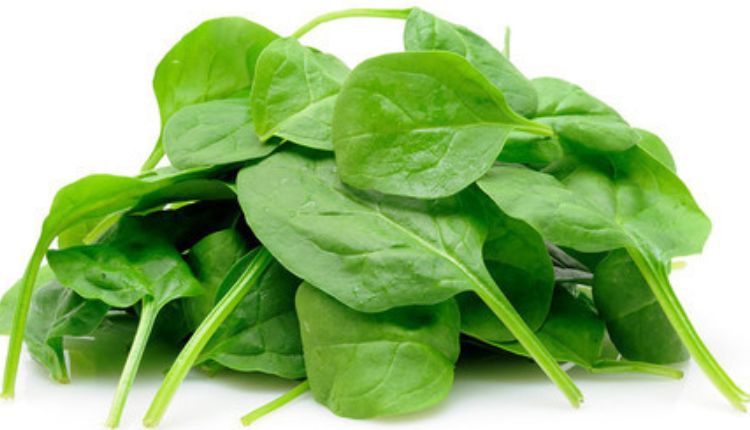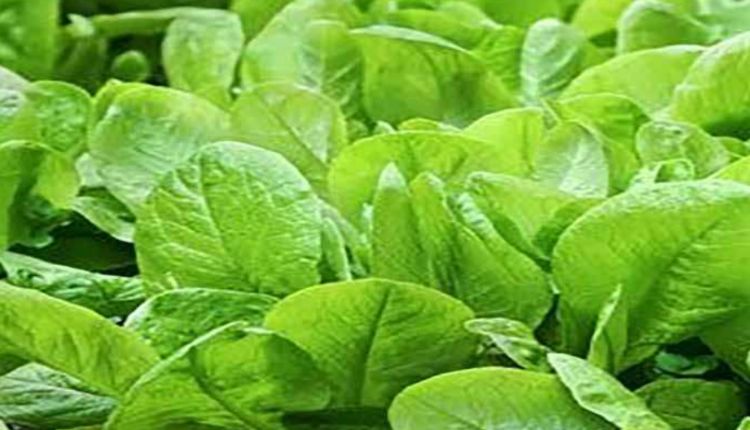Know most advanced varieties for Spinach Farming
Choose spinach varieties based on the climate and soil of the region
Although all green vegetables are full of nutritious elements, but spinach is at the forefront in terms of nutrition. It also contains vitamin A, vitamin C, vitamin K, iron, folate, potassium, fibre, purine, and oxalic acid. It is a vegetable that can be grown throughout the year, but good cultivation of spinach is done only in the cold season. There are two types of spinach, desi and exotic, which should be cultivated on the basis of climate and soil of the area. Desi spinach leaves are smooth, oval, small and straight, while the leaves of exotic spinach are cut at the ends. Spinach farming is a good option.
Climate and soil for spinach farming
Cool weather is suitable for the development of spinach leaves, it does not develop properly in summer. That’s why it is mostly cultivated in winter only. Where the weather is normal, spinach can be grown throughout the year. Desi spinach is grown in both hot and cold climates, while exotic spinach is beneficial to grow in cold climates. Varieties of exotic spinach with thorny seeds are grown in hilly areas and varieties with round seeds are grown in cold weather in plains. Although spinach can be cultivated in all types of soil, but sandy loam soil is suitable for high yield. It is necessary to have proper drainage system in the field and pH of the soil. Balance should be between 6 to 6.7.

High yielding varieties
For more profit from spinach farming, you can cultivate the following advanced varieties. Varieties should be selected keeping in mind the climate and soil of the area.
All Green- The plants of this variety of spinach are uniformly green. Its leaves become soft and ready for harvesting at an interval of 5 to 20 days. It can be harvested 6 to 7 times. This advanced variety of spinach gives more yield and seeds and stalks come after about two and a half months in cold weather.

Pusa Harit- This improved variety of spinach is suitable for hilly areas and can be grown here throughout the year. Its plants grow upwards and the color of the leaves is dark green. Its leaves are of large size. The specialty of this variety is that it can be grown in many types of climate and it can be cultivated in acidic soil also.
Pusa Jyoti – This is another improved variety of spinach, whose leaves are very soft and without fibre. Plants of this variety grow quickly and the leaves are ready for harvesting, which results in higher yield.
Jobner Green- The specialty of this variety is that it can be grown even in acidic soil. All the leaves of this variety of spinach are uniformly green, thick, soft and juicy. Its leaves melt easily on cooking.
Hisar Selection-23 – Its leaves are large, dark green in colour, thick, juicy and soft. It is a short duration variety. Its first cutting can be started 30 days after sowing and 6 to 8 cuttings can be done easily at an interval of 15 days.

How to prepare the field for spinach cultivation?
Before sowing spinach, the field should be well plowed 2-3 times. This will make the soil loose. For ploughing, harrow or cultivator can be used. Weeds should also be removed from the field at the time of ploughing.
25 to 30 tonnes per hectare of rotten cow dung and 1 quintal neem cake or neem leaves should be applied in the field before planting. The field should be prepared well and beds should be made.
How to sow?
For advanced cultivation of spinach, 30 kg seed per hectare will be required. However, 40 to 45 kg of seed is required for sowing by sprinkler method. Before sowing, treat the seeds with Bavistin or Captan @ 2 grams per kg. For the cultivation of desi spinach in the plains, sowing can be done from the first week of June to the last week of November.
While the sowing of exotic spinach can be done from October to December. In hilly areas, native spinach can be sown from the middle of March to the last week of May, while it is advisable to sow exotic spinach in the second week of August. Sowing by line/queue method, there should be a distance of 25 to 30 cm between rows and 7-10 cm between plant to plant. Add vermicompost and well decomposed cow dung while preparing the field.
100-125 quintal crop per hectare can be obtained by cultivating spinach in an advanced way. If cultivating for seed production, 10-17 quintals of seed can be obtained per hectare. First harvesting of spinach can be done after 20-25 days of sowing. After that, 6-7 cuttings can be done at an interval of 10 to 15 days.

Contact us: If farmers want to share information or experiences related to farming with us, then they can do this by calling us on the phone number 9599273766 or by writing an email to [email protected] or by sending your recording. Through Kisan of India, we will convey your message to the people, because we believe that if the farmers are advanced then the country is happy.



